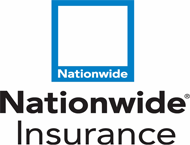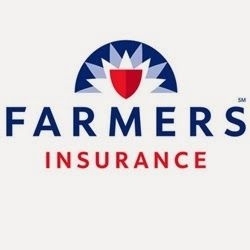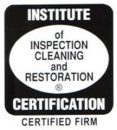Mold inspections are an essential step in identifying and addressing mold issues in homes and buildings. However, many people often wonder about the accuracy of mold inspections and how reliable the results are. In this section, we will explore the factors that influence the accuracy of mold inspections and provide insights into the reliability of professional assessments. By understanding the intricacies of mold inspections, you will be better equipped to make informed decisions regarding mold remediation and health risks associated with mold exposure.
Key Takeaways:
- Understanding the accuracy of mold inspections is crucial for making informed decisions.
- Professional mold assessments can provide reliable results.
- Factors such as environmental conditions and sample collection methods can impact accuracy.
- Addressing mold issues promptly helps maintain a safe living environment.
- Don’t underestimate the importance of reliable mold assessment in preventing health risks.
The Reality of DIY Mold Test Kits
Many individuals turn to do-it-yourself (DIY) mold test kits as a cost-effective solution to assess mold levels in their homes. These kits provide convenience and allow homeowners to take control of the testing process without relying on professional assistance. However, it is important to understand the limitations and potential drawbacks of DIY mold test kits.
DIY mold test kits typically include instructions and materials for collecting samples from different areas of the home. The samples are then sent to a laboratory, where they are analyzed for the presence of mold spores or other indicators of mold growth. While this approach may seem straightforward, there are several factors that can affect the accuracy of the results.
One of the main limitations of DIY mold test kits is the potential for user error during the collection and handling of samples. Improper sampling techniques or contamination can lead to inaccurate results and misinterpretation of mold levels. Furthermore, the analysis conducted by the laboratories may not be as comprehensive or accurate as that performed by certified mold inspectors.
Another important consideration is the inability of DIY mold test kits to identify specific types of mold. These kits often provide general results indicating the presence or absence of mold, but they do not provide detailed information about the specific species or strains of mold. This information is crucial for determining the potential health risks associated with specific types of mold.
Additionally, DIY mold test kits may not account for hidden or hard-to-reach areas where mold growth may be occurring. Mold can often hide behind walls, under flooring, or in other concealed spaces, making it difficult to accurately assess the extent of the problem using DIY kits alone.
It is important to recognize that while DIY mold test kits can provide a basic indication of mold presence, they should not be relied upon as the sole method for assessing mold levels in a home. To ensure a more accurate and comprehensive evaluation, it is recommended to consult a certified mold inspector who can employ professional testing methods and provide expert analysis.
In the next section, we will explore the role of certified mold inspectors and the comprehensive methods they use to assess mold growth in homes and buildings.
Understanding Professional Mold Assessment
When it comes to mold assessment, hiring a certified mold inspector can significantly enhance the accuracy and reliability of the results. Professional mold inspectors undergo extensive training and certification to ensure they have the knowledge and expertise to conduct thorough and accurate mold assessments.
Certified mold inspectors possess the necessary qualifications to effectively identify and evaluate mold growth in homes and buildings. They understand the various factors that contribute to mold growth and are equipped with the tools and techniques to detect even hidden mold.
By employing comprehensive mold testing methods, certified mold inspectors can provide a more accurate assessment of the extent and severity of mold infestations. These methods may include air sampling, surface sampling, and moisture testing.
During a professional mold assessment, inspectors will visually inspect the property, collect samples, and analyze them in a laboratory to determine the specific types of mold present. This comprehensive approach allows them to develop a detailed understanding of the mold issue and provide appropriate recommendations for mold remediation.
Factors Impacting Mold Inspection Accuracy
The accuracy of mold inspections can be influenced by several factors, including environmental conditions and sample collection methods. These factors play a crucial role in ensuring the precision and reliability of mold testing results. Understanding these factors is essential for conducting thorough and accurate mold inspections.
Environmental Conditions:
Environmental conditions, such as temperature and humidity levels, significantly affect mold growth and can impact the accuracy of mold testing results. Mold thrives in moist and warm environments, so areas with high humidity and inadequate ventilation are more prone to mold growth. During a mold inspection, it is crucial to consider these environmental conditions and their potential impact on the accuracy of the assessment.
Sample Collection Methods:
The methods used for sample collection during a mold inspection can also influence the accuracy of the assessment. Two commonly used methods are air sampling and surface sampling. Air sampling involves capturing airborne mold spores using specialized equipment. Surface sampling, on the other hand, involves collecting samples from visible mold growth on surfaces. The chosen method should be appropriate for the specific situation and provide representative samples for analysis.
By taking into account the environmental conditions and employing appropriate sample collection methods, mold inspectors can ensure the accuracy of their assessments. These factors should be carefully considered during the mold inspection process to provide reliable results and facilitate effective mold remediation strategies.
Common Misconceptions About “Toxic” Mold
When it comes to mold, there are numerous misconceptions and misunderstandings, particularly regarding “toxic” mold. It is crucial to separate fact from fiction to ensure a clear understanding of the health risks associated with mold exposure and the different types of mold.
One common misconception is that all molds are toxic. The truth is that while some molds can produce toxins, not all molds are toxic. Mold spores are present in the air we breathe, and exposure to certain types of mold can cause health issues, especially for individuals with allergies or underlying respiratory conditions.
Understanding the different types of mold is essential in debunking these misconceptions. There are various mold species commonly found indoors, including Aspergillus, Penicillium, Cladosporium, and Stachybotrys chartarum (commonly known as black mold). While Stachybotrys chartarum can produce mycotoxins, its presence does not automatically indicate a health hazard.
It is important to note that the health risks of mold exposure can vary depending on individual sensitivities and the extent of exposure. Some people may experience symptoms such as coughing, sneezing, wheezing, or skin irritation when exposed to mold, while others may remain unaffected.
Addressing mold issues promptly is crucial to prevent further growth and potential health risks. Whether it is visible mold or a musty odor indicating hidden mold, professional mold assessment and remediation can help mitigate the risks.
By dispelling these misconceptions and providing accurate information about the different types of mold and their potential health effects, individuals can make informed decisions about mold assessment, remediation, and the overall safety of their living environment.
Financial and Health Implications of Mold Inspections
Mold inspections not only have significant health implications but can also have a substantial financial impact. It is crucial to understand these aspects when considering the importance of addressing mold issues in your home or building.
Financial Impact of Mold Inspections:
Professional mold assessments come with costs that vary depending on the size of the property and the extent of the mold problem. These costs typically include the inspection itself, laboratory testing fees, and the creation of a comprehensive mold remediation plan.
The financial impact of mold inspections extends beyond the assessment process. If mold is detected, remediation costs can be substantial. Mold remediation involves safely removing and sanitizing affected areas, repairing any underlying issues that contributed to mold growth, and implementing preventive measures to prevent future problems.
Health Effects of Mold Exposure:
Mold exposure can lead to a range of health effects, especially for individuals with allergies, respiratory conditions, or weakened immune systems. Symptoms may include nasal congestion, wheezing, coughing, eye irritation, skin rashes, and exacerbation of asthma or other respiratory conditions.
Prolonged exposure to mold can increase the risk of more severe health issues. Some studies have linked mold exposure to respiratory infections, chronic sinusitis, and even neurological symptoms in certain cases.
Importance of Addressing Mold Issues:
Addressing mold issues promptly is essential for both financial and health reasons. By investing in a professional mold inspection, you can identify the extent of the problem and take appropriate measures to mitigate the risk. This not only helps protect your health and the health of your loved ones but can also prevent further damage to your property and potential future costs associated with mold remediation.
Furthermore, addressing mold issues proactively can contribute to maintaining a safe and healthy living environment. By keeping mold growth under control, you can reduce the risk of respiratory symptoms, allergies, and other health issues associated with mold exposure.
Conclusion
In conclusion, professional mold assessments play a crucial role in accurately identifying and addressing mold issues in homes and buildings. By relying on certified mold inspectors, individuals can ensure that their properties are thoroughly evaluated and that any potential mold problems are identified with precision.
Throughout this article, we have discussed the importance of professional assessments in maintaining a safe and healthy living environment. Certified mold inspectors possess the necessary qualifications and expertise to conduct comprehensive mold testing, taking into account the various factors that can influence inspection accuracy.
It is essential to understand that addressing mold issues promptly is vital for the well-being of both the occupants and the property. Mold exposure can lead to various health risks, ranging from allergic reactions to respiratory problems. By investing in professional mold inspections, individuals can proactively address mold problems and mitigate any potential health effects.
In summary, when it comes to mold inspections, relying on qualified professionals is the key to accurately identifying and addressing mold issues. By understanding the importance of professional assessments and considering the factors that impact inspection accuracy, individuals can make informed decisions to protect their homes and the well-being of those who reside in them.


















